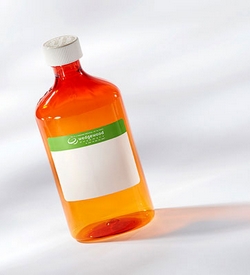Providing Quality & Trust || Clinic Website
Enalapril Maleate Oral Oil Suspension
Wedgewood Pharmacy
$89.30 - $95.95
$89.30 Each
Detailed Description
Enalapril Maleate Oral Oil Suspension

Enalapril Maleate Oral Oil Suspension
Prescribed For: Dogs, Cats and Ferrets
May be Prescribed For: Hypertension
Enalapril Maleate may be prescribed for
- Hypertension
One of the dosage forms available for Enalapril Maleate is Oral Oil Suspension. Wedgewood Pharmacy’s oral suspensions and solutions are a familiar and convenient dosage form. Oral suspensions and solutions can be administered directly into the mouth using a dosing syringe or mixed with a small amount of food. They offer a wide range of flavoring options, and flexible dosing adjustments.
19 strengths of Enalapril Maleate Oral Oil Suspension are available, ranging from 0.3 mg/ml to
Basic Information
Enalapril is an angiotensin-converting enzyme (ACE) inhibitor that is commonly prescribed by veterinarians to treat high blood pressure in cats and dogs. It also can be used in conjunction with other medications to treat mild to severe heart failure.
Enalapril is also is used in animals with chronic renal-failure and protein-losing nephropathies. Enalapril acts as a competitive inhibitor of the ACE responsible for converting angiotensin I to angiotensin II. Angiotensin II is a potent vasoconstrictor and when its concentrations are decreased, peripheral vascular resistance decreases, blood pressure decreases, aldosterone levels are reduced, and plasma renin activity is increased.
Veterinary Medicine Uses for Enalapril
Enalapril's primary purpose is to help the heart beat easier and more efficiently. It does this blocking a specific enzyme in the body that normally causes blood vessels to constrict. By blocking this enzyme, the blood vessels can remain relaxed so the pet's blood pressure can decrease to allow the blood and oxygen to flow to the heart more effectively. Enalapril also helps to reduce fluid build-up in the lungs.
As a precautionary measure, veterinarians can require periodic kidney and liver tests while taking this medication.
Enalapril is used in dogs and cats to treat CHF, occult dilated cardiomyopathy, and systemic hypertension. In large studies of dogs with moderate to severe heart disease due to mitral regurgitation or dilated cardiomyopathy, enalapril improved survival by greater than 100%, improved quality of life, improved exercise tolerance, and decreased pulmonary edema.
When treating CHF in dogs, enalapril often is combined with other drugs, such as furosemide, spironolactone, or a positive inotropic drug. Enalapril can be combined with beta blockers to treat occult dilated cardiomyopathy or systemic hypertension. The value of enalapril to treat degenerative mitral-valve disease of small breed dogs is still being investigated. While enalapril can be used to treat mild hypertension in cats, amlodipine is often prescribed for cats with severe hypertension.
Enalapril is used to treat chronic renal-failure and proteinuria. By blocking the production of angiotensin II, enalapril causes vasodilation of the glomerular efferent arterioles, decreases intraglomerular pressure, and reduces the glomerular filtration rate (GFR). The improvement in renal function is postulated to be due to the anti-hypertensive effect, the reduction in mesangial cell proliferation, and renal vasodilation, which causes a decrease in renal-filtration pressure and decreased proteinuria.
Potential Side-Effects of Enalapril
Serious side-effects that have been associated with enalapril include frequent or non-existent urination, fainting, fever, chills, bleeding, rapid weight gain, bruising, and swelling. Less-severe side effects include, but aren't limited to diarrhea, cough, loss of appetite, vomiting, dizziness, drowsiness, itching, skin rash, dry mouth, or problems sleeping.
Enalapril also can cause an allergic reaction in some dogs and cats. Signs that a pet can be allergic include swelling of the lips, face or tongue, hives, or difficulty breathing. Although enalapril is used to treat chronic renal-failure, there are instances of mild to moderate reversible renal-failure, which can be precipitated by volume depletion superimposed on dilatation of the efferent arterioles.
Drug Interactions with Enalapril
Diuretics and other vasodilators can increase the incidence of hypotension or hyperkalemia. Careful monitoring and adjustment of drug therapies can be necessary to reach the optimal therapeutic balance. NSAIDs, including aspirin, should be avoided in animals on enalapril.
Precautions for Using Enalapril
Enalapril should never be administered to a dog or cat who is pregnant as it has been shown to cause birth defects. The medication can cause an interaction with aspirin and other NSAIDS, potassium supplements, and diuretics.
Patients receiving enalapril should be monitored regularly for arterial blood pressure, renal function, and serum electrolytes. If an animal shows adverse effects due to enalapril, withdrawal followed by a lower dose or a longer dosing interval can be helpful. Severely azotemic animals should start with once-a-day dosing while being monitored closely for renal function.
Some dogs appear to be dependent on the effects of angiotensin II for maintaining GFR. While this is unusual, this subpopulation will not tolerate ACE inhibitor drugs. Enalapril should be avoided in pregnant or lactating animals.
Dosage and Administration of Enalapril
It is important that Enalapril is given in the manner and frequency prescribed. If a dose is missed, give a dose as soon as possible unless it is near the time for the next dose. The pet owner should give the missed dose as soon as possible, but if it is close in time to the next scheduled dose, skip the missed dose and administer the medication again according to the schedule. Two doses should never be given at the same time. The pet should have plenty of water available since he can get thirsty while taking this medication. This medication can be administered with or without food.
If an overdose is recognized promptly, gut-emptying protocols should be tried. Hypotension is the most clinically significant problem when managing an overdose of enalapril. Hospitalization with volume expansion, blood pressure monitoring, and supportive care can be necessary.
Popular brand names for manufactured enalapril include Enacard® and Vasotec®.
20 mg/ml.

Powered by nopCommerce
This site is running in live payment mode. Real payments will be processed.

